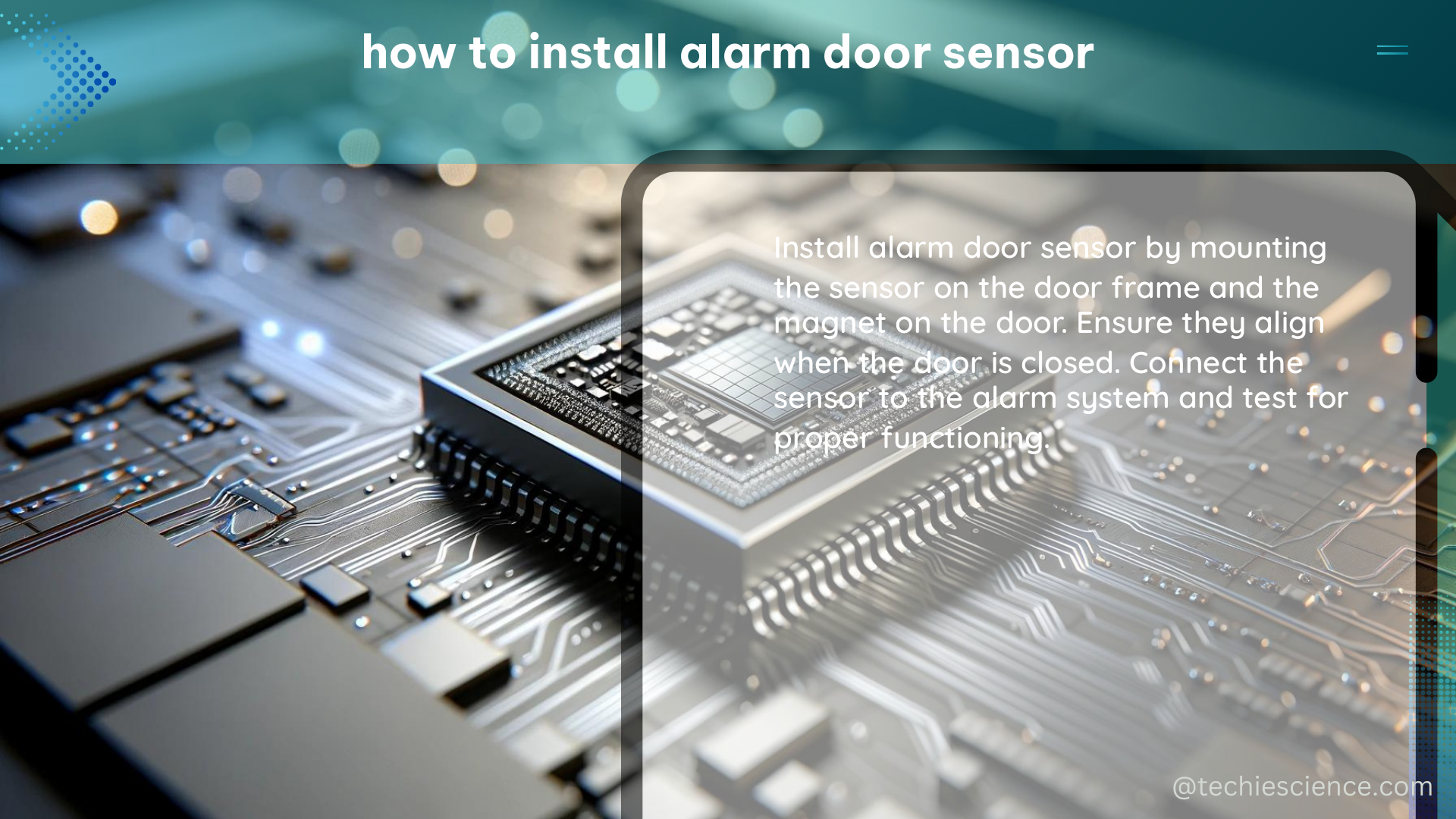Installing an alarm door sensor is a crucial step in enhancing the security of your home or office. These sensors are designed to detect when a door is opened, triggering an alarm or notification to alert you of potential intruders. In this comprehensive guide, we’ll walk you through the step-by-step process of installing an alarm door sensor, covering everything from the necessary equipment to the specific installation techniques for various door types.
Gathering the Necessary Equipment
Before you begin the installation process, you’ll need to gather the following items:
- Alarm Door Sensor: This is the main component of the system, responsible for detecting the opening and closing of the door. Ensure that you have the correct sensor for your door size and type.
- Magnet: The magnet is used in conjunction with the sensor to detect the door’s movement. It is typically placed on the door frame, opposite the sensor.
- Adhesive Strips or Screws: These are used to securely mount the sensor and magnet to the door and frame.
- Measuring Tape: Accurate measurements are crucial for proper sensor and magnet placement.
- Level: Using a level will help ensure that the sensor and magnet are aligned correctly.
- Drill and Drill Bits: If you need to drill holes for mounting, you’ll need a drill and the appropriate drill bits.
Determining the Sensor and Magnet Placement

The placement of the sensor and magnet is critical for the proper functioning of the alarm system. Here are the key considerations:
- Door and Frame Clearance: The sensor and magnet should be placed with a gap of no more than 2 inches between them when the door is closed. This ensures that the sensor can reliably detect the door’s opening and closing.
- Sensor Placement: The sensor should be mounted on the door, centered top to bottom. If the door has molding, you can mount the sensor on the door and the magnet on the molding.
- Magnet Placement: The magnet should be mounted on the door frame, directly opposite the sensor. It should be centered top to bottom, aligning with the sensor.
- Sensor Range: Ensure that the sensor and magnet are within the specified range of the sensor. Consult the manufacturer’s instructions for the recommended range.
Installing the Sensor and Magnet
- Clean the Mounting Surfaces: Use a clean, dry cloth to wipe down the areas where the sensor and magnet will be mounted. This will help the adhesive strips or screws adhere properly.
- Mark the Mounting Locations: Use a pencil to mark the exact spots where the sensor and magnet will be placed. Measure carefully to ensure proper alignment.
- Mount the Sensor: If using adhesive strips, peel off the backing and firmly press the sensor into the marked location on the door. If using screws, pre-drill the necessary holes and secure the sensor in place.
- Mount the Magnet: Repeat the process for the magnet, placing it on the door frame directly opposite the sensor.
- Adjust the Placement: If the gap between the sensor and magnet is not within the recommended range, you can use a block of wood or other spacer to adjust the sensor’s position and ensure a proper fit.
Testing the Alarm Door Sensor
After the installation is complete, it’s essential to test the sensor to ensure it’s functioning correctly. Here’s how to do it:
- Open and Close the Door: Slowly open and close the door, observing the sensor’s response. You should see a visual indicator, such as an LED light, or receive a notification on your mobile app or alarm control panel.
- Check the Sensor Status: Consult your alarm system’s control panel or mobile app to verify that the sensor is properly registered and functioning as expected.
- Adjust the Sensor if Necessary: If the sensor is not detecting the door’s movement reliably, make adjustments to the placement of the sensor and magnet until the desired performance is achieved.
Maintaining the Alarm Door Sensor
To ensure the long-term reliability of your alarm door sensor, it’s important to perform regular maintenance:
- Battery Replacement: Check the sensor’s battery level periodically and replace the battery as needed. Consult the manufacturer’s recommendations for the appropriate battery type and replacement schedule.
- Sensor Cleaning: Gently wipe down the sensor and magnet with a clean, dry cloth to remove any dust or debris that may accumulate over time.
- Sensor Functionality Check: Regularly test the sensor by opening and closing the door to ensure it continues to function correctly.
By following these comprehensive steps, you can successfully install an alarm door sensor and enhance the security of your home or office. Remember to always refer to the manufacturer’s instructions and consult with a professional if you have any doubts or concerns during the installation process.
References:
- Door Sensor Install (DIY/DIT) – YouTube
- An Approach for Representing Sensor Data to Validate Alerts in Smart Homes
- How do I install the entry sensor on a door with molding all around it? – SimpliSafe Support
- How to Install Entry Sensors | SafeWise
- Using a multimeter to check my alarm sensors – DIY Chat Room

The lambdageeks.com Core SME Team is a group of experienced subject matter experts from diverse scientific and technical fields including Physics, Chemistry, Technology,Electronics & Electrical Engineering, Automotive, Mechanical Engineering. Our team collaborates to create high-quality, well-researched articles on a wide range of science and technology topics for the lambdageeks.com website.
All Our Senior SME are having more than 7 Years of experience in the respective fields . They are either Working Industry Professionals or assocaited With different Universities. Refer Our Authors Page to get to know About our Core SMEs.